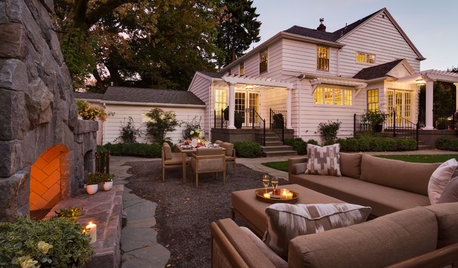I posted earlier about my delayed start in getting my "Janet Blair" rhody and 2 camellias in the ground and was reassured by the responses (thanks, rhodyman and morz8!). The lasagna bed I've made for them has only baked for about 3 weeks, but of course it's chilly enough now that it's not getting very warm even under black plastic. I'm getting antsy to get these guys out of their pots. I have had success in planting in unbaked lasagna beds before, but only with perennials, not shrubs, and not in the winter. I've read that you can plant shrubs this way too, so long as you make a biggish hole in the layers and add some soil or compost for the roots to grow into while waiting for the layers to break down. What should I do? Should I plant them, or keep them in their pots for a while longer, nestled up the house? To be honest I'm worried about either over- or under-watering them if they stay in pots much longer.....







morz8 - Washington Coast
Embothrium
Related Professionals
Ilchester Landscape Architects & Landscape Designers · Lake Oswego Landscape Architects & Landscape Designers · Otsego Landscape Architects & Landscape Designers · Rancho Palos Verdes Landscape Architects & Landscape Designers · Springfield Landscape Contractors · Allentown Landscape Contractors · Edmond Landscape Contractors · Dickinson Landscape Contractors · Fort Worth Landscape Contractors · Harrisburg Landscape Contractors · Paramus Landscape Contractors · Ronkonkoma Landscape Contractors · San Benito Landscape Contractors · South Lyon Landscape Contractors · Webster Groves Landscape ContractorslcehOriginal Author
rhodyman
lcehOriginal Author
paddykevin
rhodyman